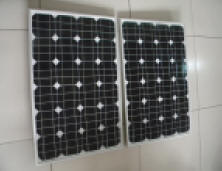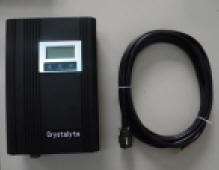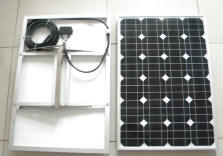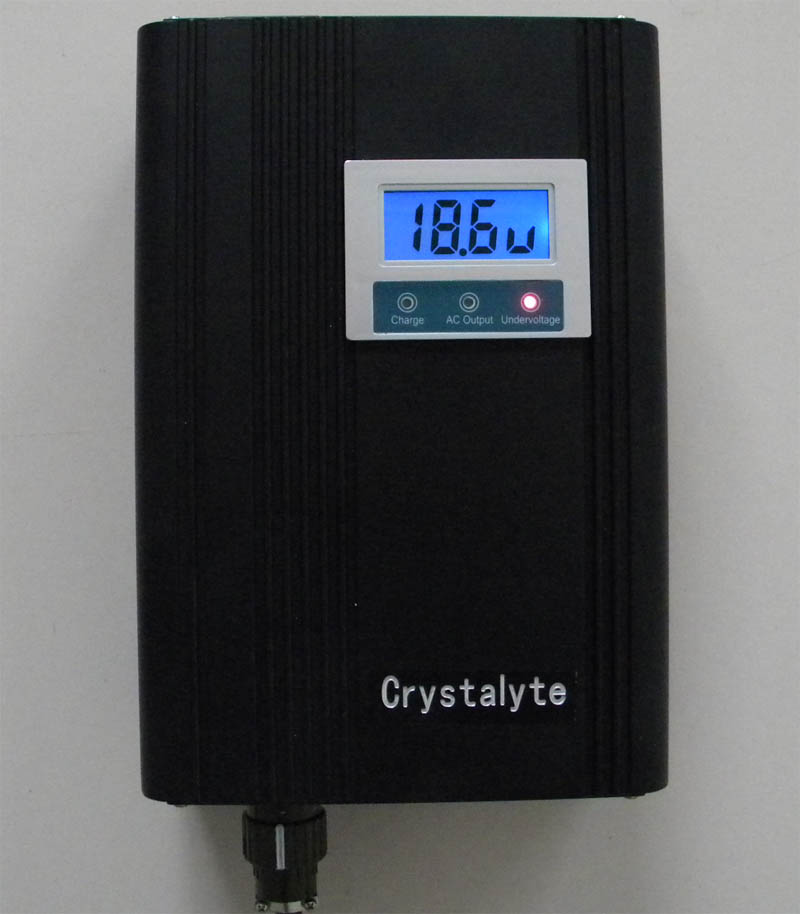|
|
¡¡
Crystalyte
¡¡
¡¡
Crystalyte
¡¡
Solar Energy Photovoltaic Home System
¡¡
Solar Energy Photovoltaic Home System is suitable for one or more family. It uses a set of new energy technologies device, convert solar energy into electrical energy to solve the home lighting and some basic daily electrical requirements. Its most outstanding value is through a one-time investment and a small amount of self-maintenance costs, you can use for 20 years or even longer; while in use, the family do not need to pay for electricity.
Solar Energy Photovoltaic Home System is
suitable for areas far from the city to use, such as: outer suburbs, grasslands,
islands, deserts, mountains and so on. In short, it can be used in any place,
where has good condition of sunshine. Solar Energy Photovoltaic Home System is
also suitable for some relatively fixed work area resident, work teams and
groups, observation stations, posts, camps.
Solar Energy Photovoltaic Home
System is characterized by high reliability, stable performance, easy
installation, easy to operate.
¡¡
¡¡
|
|
| ¡¡ |
¡¡
¡¡
Model : ST - H 400WH
¡¡
- Solar Panel : 50W / 2pcs
- Battery : 24V 24Ah / 12V x 2 Packs ( Optional )
- Controller / Inverter : 24V 10A 1 Set
Display : LCD Display [ V ] [ W ]
- Output Socket : 2 Core 1 set
- Dimension : 265 x 180 x 85mm
- Input Cable : 1pcs
- Cable for battery : 1pcs
- Output Load Cable : 1pcs
- Lighting Source : LED Light 1st
- Panel with Support Structure
* See the detail with photos below.
¡¡
Information
1¡¢¡¾Product Name¡¿
2¡¢¡¾Product Model¡¿
3¡¢¡¾Overview¡¿
4¡¢¡¾Basic Configuration¡¿
5¡¢¡¾Product structure and wiring Diagram¡¿
6¡¢¡¾key performance parameters¡¿
7¡¢¡¾Protection Function¡¿
8¡¢¡¾Power supply capability¡¿
9¡¢¡¾Installation and Operation¡¿
10¡¢¡¾Maintenance¡¿
11¡¢¡¾Important Warning¡¿
12¡¢¡¾Common Faults and detection method¡¿
13¡¢¡¾Notes¡¿
¡¡
Solar Energy Photovoltaic Home System
Product Guide
1. Product Name
Solar Energy Photovoltaic Home System
2. Product Model
ST-H/400Wh
3. Overviewn / Basic Configuration
Solar photovoltaic home systems include solar panels, storage batteries, charge controller, inverter device, display device, the applicable access sockets, power transmission conductors and applicable load devices (such as the light source) and so on.
1, Solar photovoltaic panels: solar panel is used to continuously generate electricity for solar energy photovoltaic systems. How to choose solar panel, it must be based on the user load power requirements, that is, to determine the size of consumption; neither small nor too large; when solar panels is small, the power supply can not meet basic electricity requirements; when solar panels is too large, result higher cost. Therefore, choosing the right one match the basic needs of electricity.
2, Energy storage batteries: solar panels collect solar energy to electricity in the daytime, but power requirements of load may during the day and night, therefore, it need to use energy storage batteries to collect energy in the day time and could supply power at night.
Storage batteries should match solar panels, at the same time could meet the
electricity needs of the load. At present, the storage battery main products are
maintenance-free lead-acid battery, gel batteries, iron, lithium batteries, from
a cost point of view, maintenance-free lead-acid gel batteries is more
economical, its life can reach 3 to 5 years, could be suitable for solar energy
photovoltaic home system.
3, Charge controller: It is the key component of solar energy
photovoltaic system. A good charge controller, could change battery according to
the strength of sunlight. It should make solar energy photovoltaic home system
collecting as much energy as possible, that means, charge conversion rate should
be high; second is able to change according to the load power, indicating under
voltage, over current, short circuit and alarm. Therefore, choosing a good
charge control system is important to use.
4, Inverter devices: output of solar panel is DC power, under normal circumstances, DC can be directly connected to the use of the load; but when there is a need alternating current, it is necessary to convert DC to AC. Inverter output is generally AC 220V or AC 110V.
5, Display device: show the status of system, it could show input and output voltage / current; if necessary, it could also show input power and power consumption.
6, applicable socket: According to the general user's requirements, system installed some common access socket can be connected to lights, computers, mobile phones and other electrical loads; also could be based on specific requirements, install special socket for user.
7, Cables:
the system comes with some installation required cables and wires.
8, the applicable load device: some light source, such as: portability
energy-saving lamps, LED lamp.
Solar energy photovoltaic home system is a household power supply, it can be
continually used, continuously collect energy from sunlight. the daily storage
capacity is relatively limited; Thus, the general design, the input voltage /
current, output voltage / current, load power are certain limits. Normally
system can be input DC voltage 12V, 24V, input current is generally 5A ~ 10A;
its use efficiency can refer to the following formula: the use of load power ¡Á
time = save electricity Ah ¡Á 0.8.
¡¡
|
Model: ST-H/400Wh |
|
|
Item |
|
|
Solar Panel |
50W/2pcs |
|
SLA Battery |
24V20Ah/2Group * |
|
Controller / Inverter |
24V/10A 1set |
|
Display |
LCD Display\I\W] |
|
Output Socket |
2 Core 1set |
|
3 Core |
|
|
Dimension |
265¡Á180¡Á85 |
|
Cables |
Input cable 1, battery cable 1, Output Load cable 1 |
|
Lighting Source |
LED light 1set |
|
Solar Panel Support Structure |
|
|
Note£º* optional |
|
5. Product structure and wiring Diagram
¡¡
¡¡
6. Key Performance Parameters
|
ST-H/400Wh |
|
|
Item |
|
|
Rated Voltage (V) |
24V |
|
Charge Disconnect Voltage (V) |
31.2V |
|
Charge Reconnect Voltage (V) |
26.5V |
|
Low Voltage Disconnect (V) |
21.6V |
|
Low Voltage Reconnect (V) |
22.5V |
|
DC output voltage range£¨V¡À%£© |
24V¡À3V |
|
Maximum Current £¨A£© |
5A |
|
Rated output power £¨W£© |
100W |
|
Maximum output power £¨W£© |
120W |
|
Operating Temperature |
-20¡æ+50¡æ |
|
Relative Humidity |
£¼90%RH |
|
Solar PV Day Charge volume (5h dollars) ¡¡ |
400Wh |
1, output overload protection: load power exceeds the maximum output power, the system automatically shuts down;
2, output short circuit protection: Output short-circuit occurred, equipment will be automatically protected, off output;
3, battery polarity reverse protection: battery "+""-" reverse polarity could be continue used after corrected;
4, Battery Over-Discharge protection: Battery Voltage is below 10.8V (12V system) / 21.6V (24V system), There is no output, voltage indicator light; when the battery voltage is higher than 11.2V (12V system)/22.5V(24V System), the output restart.
5, Over-charging protection: battery voltage is below 13.2V (12V system)/ 26.5V (24V system), battery will be charged in float charging status; when the battery voltage is 15V (12V system)/31.2V (24V system), solar panel will be completely shut down charging that this is overcharge protection; when the battery voltage discharge to 13.2V (12V system)/ 26.5V ( 24V system), resume charging.
6, solar panel reverse protection: solar panel "+""-" reversed polarity, there is anti-reverse circuit, , may continue using after corrected .
7, lightning protection: close the main control box input switch, can protect against lightning.
8.Power supply capability
¡¡
|
Power supply capability ( full charged) |
ST-H/400Wh |
|
|
Load power |
Working Hours |
|
|
120W |
3.5h |
|
|
80W |
5h |
|
|
40W |
10h |
|
|
20W |
20h |
|
|
10W |
40h |
|
|
5W |
80h |
|
|
Note: Due to weather, sunlight is different, differences in the amount of the daily charge, as well as energy storage battery systems, and there are some self-discharge losses, the actual use of the power supply time and marking time, there will be certain changes in the different part of the normal situation. ¡¡ |
||
9. Installation and Operation
1, Installation:
¢Ù First, fix the master box with a fixed screw at the position where is easy to operation and observation;
¢Ú Fix solar panels to the solar panel bracket, and choose the best angle in order to make solar panels perpendicular to incoming sunlight; then fixed support structure on the ground or a suitable flat surface.
¢Û Put energy storage batteries in close with master box without affecting the activities of people, and isolate the batteries..
¢Ücheck whether the master box master switch off, if not off, turn off first , and then According to the master box indicator, connect one side of cable the solar panels and the other side to master box,
¢Ý connect the cable of battery (red for "+", black for "-") to the corresponding interface on the master box
¢Þ connect load (LED lights or other electrical appliances) to the according interface "+","-"
¢ß check all the cables connected, turn on system switch
¢à The system uses the LCD display, the right signal of the display of characters as a unit, followed by solar panel voltage (U) V, the charge current (A) amperes, energy storage battery voltage (u) volts, temperature (¡æ) degrees Celsius.
2, Charging:
The system uses PWM Pulse modulation, combined with real-time MPPT convert the Solar Energy with high efficiency charging battery; charging has low voltage, fast charge, float charge, over-charging, stop charging five kinds of status. Different status with charging current; in float charging the system will enter a cycle of decreasing current charging; in over-charging the system will enter a cycle with a very small trickle charge current, in order to compensate for battery self-discharge and insure the maximum battery energy storage.
The system has external temperature sensor to measure the ambient temperature in real time in order to correct the battery temperature compensation, the compensation coefficient-3.84Mv / ¡æ / cell, ensure the battery not over charged or not fully charged due to environmental temperature, ensuring the battery life.
1) system running, observation of input voltage, current;
2) LED indicator yellow means charging .
3) LED red direct that battery voltage (below 21.6V)is in low voltage status, need to close the load and continue to charge.
¡¡
3, Inverter:
When the LED indicator is green, means inverter switch is on, at this time could supply 220V AC output. If the battery voltage is below 21.6V (25 ¡æ when the value; ambient temperature changes, this value is automatically corrected), the system will automatically turn off inverter, in order to protect the storage battery from being over-discharged; the same time, the green indicator does not shine (even if the inverter switch on the ON position, can not open the inverter). When the storage battery voltage is higher than the opening voltage of the load, the system will automatically open the power inverter (power inverter switch must be on the ON position) then output alternating current.
¡¡
4, Power supply£º
¢Ù open the output load switch, LED indicator green, the power in a standby status, you can normally provide AC power to the load.
¢Ú When the LED indicator is red, indicating the load in a fed power state, power supply is insufficient and needs to shut down the load. The load in the fed power state, there are two cause, one is the system load power exceeds the maximum power requirements, in this case load must be replaced under rated power; the other cause is the system used too much, stored energy is not enough, let the system continue to charge, over a period of time, you can connect the load to use.
¢Û In the system, installed fuse for the inverter, used to protect the storage batteries and other devices from outside impact of high current. When the AC load exceeds the design requirements (¡Ý 160W), system will automatically shut down inverter; reduce the AC load power requirements(¡Ü 150W) could restart AC power.
¢Ü turn off the load output switch, When no power requirement , in order to keep stored energy and charge the battery.
10. Maintenance
1,clean solar
panel¡¯s surface regularly, in order to get a better power output.
2, check system state regularly, in order to maintain the system functions
well.
3 check plug, cable and socket regularly, in order to avoid the system short
circuit, open
circuit.
¡¡
11. Important Warning
1, keep away
from children
2,keep away from water;
3, keep away from fire;
4, do not throw;
5, avoid stress, squeeze;
6, avoid hit, strong vibration;
7, keep away from corrosive substances, inflammable and explosive materials;
8,do not exceed the prescribed maximum load power requirements.
12. Common Faults and detection method
|
Item |
Fault |
Cause |
Remedy |
|
1 |
No Power Input |
PV panels input plug and socket disconnect |
Reconnect plug |
|
Photovoltaic cells welding wire break off |
Repair welding wire |
||
|
Photovoltaic cells internal fault |
Replace panel |
||
|
2 |
Can not be charged |
charging circuit cable disconnected |
Reconnect cables |
|
Charger Fault |
Replace Charger |
||
|
battery internal resistance fault |
Replace battery |
||
|
3 |
Insufficient power supply |
exceed the rated load |
Use rated load |
|
Lack of storage capacity |
Need sunlight to supply power |
||
|
4 |
No output power |
Output connector plugs, socket disconnect |
Reconnect plug |
|
Cable break off |
Repaired cable |
||
|
Controller Fault |
Replace Controller |
13. Notes
1, Package£º
Carton packaging contains packing lists, product manuals, certification, accessories and related file.
Package£º ST-H/400Wh 1150MM¡Á190MM¡Á600MM
2, Transportation£º
Transportation process should avoid sunlight exposure and rain, avoid stress, collisions.
3, Storage£º
Should be stored in ventilated and dry place, avoid contact with flammable materials and corrosive chemicals, avoid stress, strong mechanical.
¡¡
¡¡
¡¡
Parts Photos
¡¡
¡¡
 |
 |
 |
 |
¡¡
¡¡
¡¡